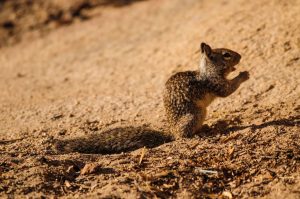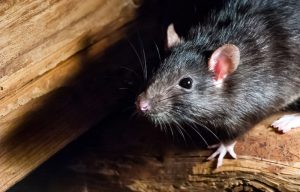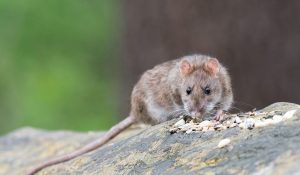Raccoons dig through your trash, destroy your lawn and garden, and transmit diseases that can be dangerous for your family and pets.
Fortunately, you don’t have to live with destructive raccoons forever.
Based on our 15+ years of experience helping California homeowners get rid of wildlife from their properties, we’re sharing our top tips on how to get rid of raccoons once and for all.
Key Takeaways
- To get rid of raccoons, identify their harborage areas, remove food sources, seal entry points, and use live traps to remove remaining raccoons.
- Signs of a raccoon infestation include knocked-over trash cans, tracks, droppings, and strange sounds like mewing, whistling, and growling.
- If the raccoons keep coming back or you can’t get rid of them on your own, contact a professional wildlife control company like Smith’s for expert assistance.
How to Get Rid of Raccoons on Your Property Humanely
When it comes to raccoon removal, we always advocate humane and natural removal over lethal methods.
If you have a raccoon problem, here are a few steps you can use to eliminate raccoon from your property.
In your yard or garden
When raccoons take up residence in your lawn or garden, they’re typically looking for food.
Raccoons scavenging for grubs, for example, will rip up grass, flowers, and landscaping to expose their favorite food sources.
This can quickly cause thousands of dollars of damage to your flowers, shrubs, and grass.
To get rid of raccoons in your yard or garden, we recommend the following:
- Invest in a professional grub treatment. If you’re based in the San Francisco Bay Area, Smith’s Pest Management will treat your lawn and garden to get rid of grubs and other food sources for the raccoon, encouraging raccoons to go elsewhere (and stop tearing up your grass). For best results, we recommend enrolling in an annual lawn grub treatment program, which keeps grubs from coming back each summer and keeps your property raccoon-free. Contact us to learn about this service: (408) 871-6988
- Make sure all outdoor trash is tightly sealed in durable metal or plastic containers with tight-fitting lids that clip into place.
- Keep your trash cans in a garage or closed outdoor shed whenever possible.
- If raccoons are still getting into your trash, despite your best efforts, secure the lids with wire or clamps to prevent the raccoons from opening the lids and accessing the garbage.
- Garbage cans should also be tied to a support or secured to a rack so that raccoons can’t tip them over.
- Bring in any outdoor pet or bird food each night.
- Never feed raccoons. Raccoons can look cute, and they can be convincing beggars, but you should never place food out for raccoons. Even feeding a single raccoon will just attract more raccoons.
In the attic
If you have a raccoon in the attic, it’s likely a female with babies. Females looking for places to nest will rip off facia boarding, vents, and more to find a secure space.
To get rid of a raccoon in the attic, follow these steps:
- Find out if there are babies. Before you take steps to get rid of the raccoons, determine if it’s a mother raccoon with babies. If so, allow the raccoons to stay where they are for a few weeks so the babies can grow. Otherwise, they’ll die without their mother.
- Next, you can install one-way doors to get the raccoons out of your attic. Once they leave, they won’t be able to re-enter. To encourage them to exit, place a loud, battery-operated radio in the attic or set a bowl of cider vinegar near their nest site. Alternatively, hire a pest control professional like Smith’s to deal with the problem. We will humanely relocate the mother and her babies and make sure none of the raccoons are harmed in the process.
- Set live raccoon traps to catch and remove all present raccoons. If you’re going to do this, contact your local Fish and Wildlife Department first. They’ll be able to supply you with traps and help you relocate the raccoons safely.
- Seal all gaps and openings in your attic, including vents and seals. If you have raccoons in the attic, you need to figure out how they got there. Inspect the house thoroughly to find the entry point the raccoons are using. Use a galvanized hardwire wire mesh to seal these access points.
- Remove all sources of food, water, and bedding material raccoons may be using.
Under the house or deck
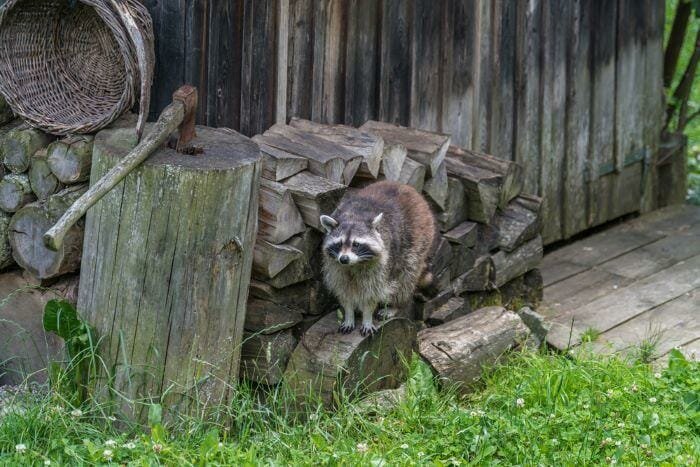
Again, a raccoon living under the house or deck is usually a mother with babies.
Female raccoons generally have their babies between January and June, so care should be taken to remove the raccoons without orphaning the babies.
Here are a few tips:
- Use live traps to catch and remove the mother raccoon and her babies. To encourage wary raccoons to enter traps, work the bottom of the trap down into the dirt so that there’s a layer of earth over the base of the trap.
- If you’re placing live traps in the travel paths the raccoons use each day, disguise them with twigs, branches, and other natural material.
- Pre-bait traps with food lures like peanut butter, vanilla wafers, marshmallows, and whole raw eggs placed in and around the trap and on the trail leading to the trap, but secure the trap door open with twist ties for the first 2-3 days. This will encourage wary raccoons to feed freely at first and help prevent trap avoidance. Since raccoons are naturally attracted to shiny objects, you can also add a piece of balled-up aluminum foil to the trap to pique their curiosity.
- Place logs, stones, and other heavy objects around the side of the trap to prevent raccoons from stealing the food lures through the sides of the trap. Traps should also be staked down to prevent the raccoons from picking the trap up and shaking the bait out.
- Place the trap as close to the entrance of the raccoon den or nesting area as possible.
- Check traps once or twice daily.
- Always wear protective gloves and clothing when setting or handling raccoon traps, and clean and disinfect all raccoon traps between uses.
- Once the raccoons are gone, clean out the nest space under the home or deck. Remove all bedding material.
- When the space is clean, screen everything off with quarter inch hardware cloth / heavy duty wire mesh.
On the roof
Raccoons are excellent climbers, and while it can be alarming to find them on your roof, it’s a common experience for many homeowners.
When raccoons spend time on your roof, they can damage your shingles or roofing material, enter chimneys and vents (causing dangerous fire hazards), and more.
Here are a few smart ways to get rid of them:
- Trim the trees, vines, and landscaping around your home to decrease “bridges” onto your roof.
- Eliminate food sources, including trash, compost, pet food, and birdseed.
- Place metal sheeting around the edge of your roof, as well as the bases of the trees on your property. This will deter raccoons without hurting other animals, like your outdoor cats.
- Set live traps at the base of trees raccoons are climbing to access your roof.
- Install a strip of electric fencing on top of any fences that are close to your home or roof.
- Fasten a commercial spark arrestor cap made of hardware cloth and sheet metal to the top of your chimney, or secure a heavy wire screen over the opening to prevent raccoons from nesting in the space.
In your walls
If you have a raccoon in the wall, the situation can become stressful very quickly. Raccoons in the wall make noise at all hours of the night and can damage your insulation, wiring, and more.
Here are some tips to get rid of a raccoon in the wall:
- Hire a professional pest management company like Smith’s. Getting rid of raccoons in the wall is a big job and can be dangerous for both you and the raccoons if you attempt to DIY it.
- Once the professional pest management company has removed the raccoons from your wall, you can work to identify the access points and seal them, preventing future entry.
At the bird feeder
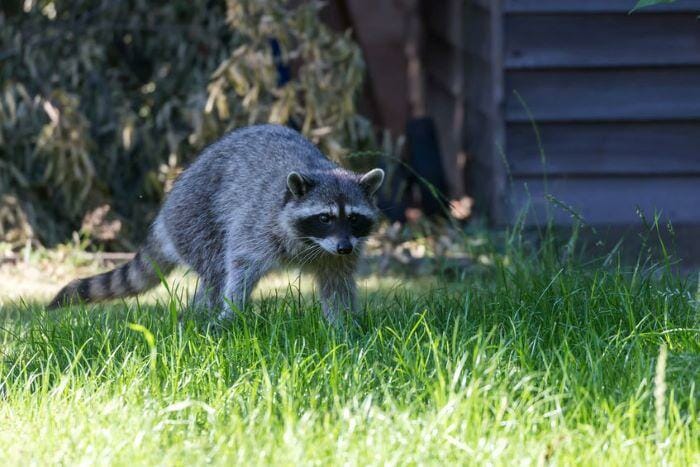
Figuring out how to keep raccoons away from bird feeders can feel like an uphill task. Their size, excellent climbing ability, and maneuverable hands allow them to access most birdfeeders.
Fortunately, it is possible to put an end to raccoons at your feeders.
Here’s what we recommend:
- Hang your feeders as high as possible. The Humane Society recommends hanging bird feeders from stands ½” or less in diameter since raccoons cannot climb such thin poles.
- Hang feeders from wires suspended between two trees. Make sure the feeders are far enough away from each tree that raccoons can’t leap onto the feeder.
- Add store-bought raccoon guards to pole-mounted feeders.
- Purchase raccoon-resistant bird feeders.
In the chimney
A raccoon in the chimney can be a serious fire risk, as bedding and nesting materials are often highly flammable.
So, what will keep raccoons away?
To get rid of raccoons in your chimney, follow these tips:
- Hire a professional to remove the raccoons from the chimney. A professional pest management company like Smith’s will be able to remove all the raccoons without killing them or damaging your chimney.
- Once the raccoons are gone, clean the space they left behind. Remove any nesting material or other objects left in the chimney by the raccoon.
- Seal the chimney. Use a spark arrestor or chimney cap that features durable wire mesh. This covers the chimney hole and makes it inaccessible to raccoons.
In your chicken coop
Raccoons are voracious chicken predators and will do anything they can to access a vulnerable chicken coop.
To keep raccoons out of your coop, follow these tips:
- Use hardware cloth to cover the windows of the coop. This cloth is sturdy enough to resist raccoon attacks.
- Bury the hardware cloth 2-4 feet deep around the perimeter of the coop to deter the raccoons from digging into the coop. Consider running the cloth over the chimney, as well, if the coop can be accessed by climbing.
- Install complex latches and locks on the chicken coop doors, which raccoons will not be able to open.
- To keep raccoons out of your chicken coops, install electric fences around the perimeter of them. We recommend constructing a fence with two wires – one 6 inches above the ground and the other 12 inches above the ground. This will prevent raccoon damage without harming the animals.
In a tree
A single raccoon in a tree may not be a large issue, but a nest of raccoons will be. Remove raccoons from a tree with these tips:
- Place live traps at the base of the tree to cage and remove the raccoons.
- Install sheet metal or raccoon guards to the trunks of your trees to prevent climbing.
- Clean up fruit or nuts dropped by the tree to remove food sources for raccoons.
Unproven Raccoon Control Methods
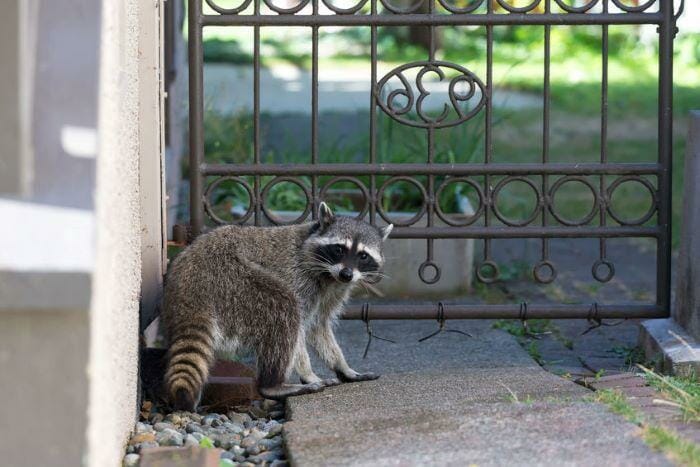
❌Repellents
There’s no evidence to suggest that home remedies like castor oil, hot pepper spray, or ammonia, or store-bought repellents will deter raccoons.
❌Ultrasonic Devices
Some sources claim that ultrasonic devices will repel raccoons, but that just isn’t true. Raccoons are smart, adaptable creatures, and they’ll just get used to the noise.
❌Hazing Tactics
Hazing tactics like floodlights, loud noises, and motion-activated sprinklers will only work as long as you keep them up, so they’re just not a practical solution to keep raccoons away.
How do Wildlife Removal Experts Get Rid of Raccoons?
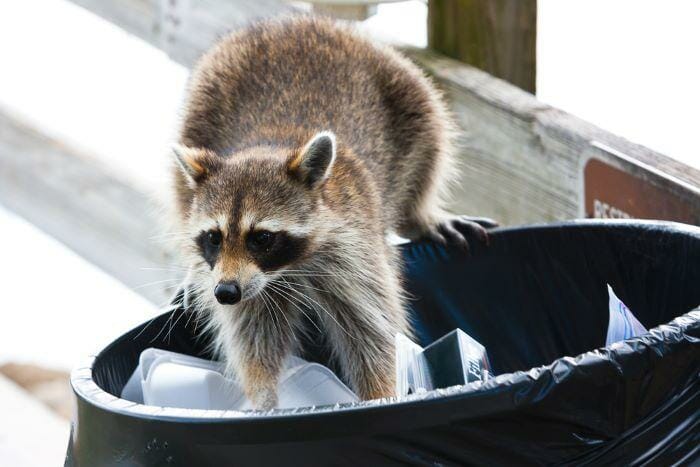
Sometimes, getting rid of raccoons is a job only a wildlife control professional can do. Here’s how our team can help:
- Initial Assessment. First, we’ll begin by assessing your problem areas. Our experienced pest control technicians will inspect your property to determine how raccoons are getting in, and what damage they’re causing. We’ll pinpoint their entry spaces and make a plan to resolve them.
- Trapping. While we’re serious about getting rid of your raccoon problem, we always take the humane approach. To remove raccoons without harming or killing them, we’ll set safe, live traps to catch the raccoons. We monitor and check these traps daily and will relocate the raccoons once we’ve captured them.
- Exclusion Methods. Finally, we’ll prevent future raccoon infestations by installing exclusionary barriers to keep raccoons from coming back. We use commercial-grade exclusion methods that hold up to the test of time and won’t negatively impact your property.
Are Raccoons Taking Over Your San Francisco Bay Area Property? We’re Here to Help!
Sick of dealing with raccoons on your property? Our team is here to help.
Offering comprehensive raccoon control services, Smith’s Pest Management uses various humane techniques to get rid of raccoons and help you reclaim your outdoor space.
We serve residential and commercial properties in Northern California, from Marin to Monterey.
Contact us today to schedule your raccoon control service: (408) 871-6988
Yes. In rare cases, raccoons can bite humans or domestic pets, and they also spread disease. In recent years, there have been more cases of raccoons transferring roundworms (Baylisascaris) to humans. This transmission occurs when humans accidentally ingest roundworm eggs after handling feces containing roundworm eggs, which usually occurs during live trap setting. The disease can cause damage to the spleen, liver, lungs, eyes, and nervous system and can be fatal in extreme cases. Raccoons can also carry fleas. Raccoons can also become aggressive, and pose a threat to small children as well as pets. Raccoons are nocturnal, meaning they’re only active at night. As a result, their presence can be difficult to detect. The best way to tell that you have a raccoon problem is to pay attention to the clues they leave behind. Here are a few things we recommend keeping an eye out for: Regardless of what raccoon signs you notice, dealing with the issue promptly is critical. Raccoons can be very damaging, and waiting too long to address the problem will only make the infestation worse. If you’re going to trap raccoons, use heavy-duty traps specifically designed for raccoons. Raccoons are strong and dexterous and can easily destroy standard wire mesh traps. Raccoons normally will not leave on their own. Unless you take steps to remove food sources, seal holes and access points, and remove nests, the raccoons will keep coming back. No, raccoons are not rodents. In fact, they belong to the order Carnivora, which means they’re more closely related to bears and wolves than they are to mice and rats. Raccoons are very verbal, and they can make all sorts of sounds, including purring, growls, snorting, snarls, screams, and whimpers. No. This is a very unethical way to get rid of raccoons, and it might not be legal in your area either. If you are looking to kill raccoons, it’s best to euthanize them humanely.FAQ
Are raccoons dangerous?
How do I know I have a raccoon problem?
What are the best traps for raccoons?
Will raccoons leave on their own?
Are raccoons rodents?
What sounds do raccoons make?
Can I drown raccoons?



